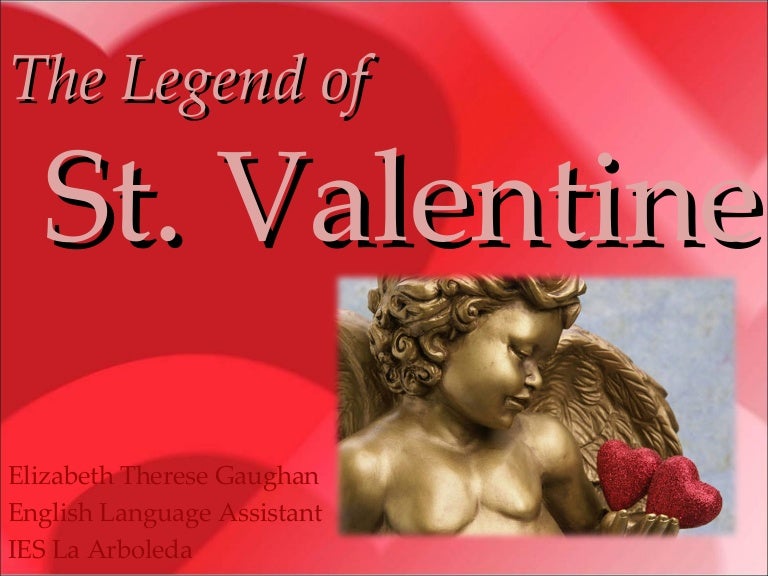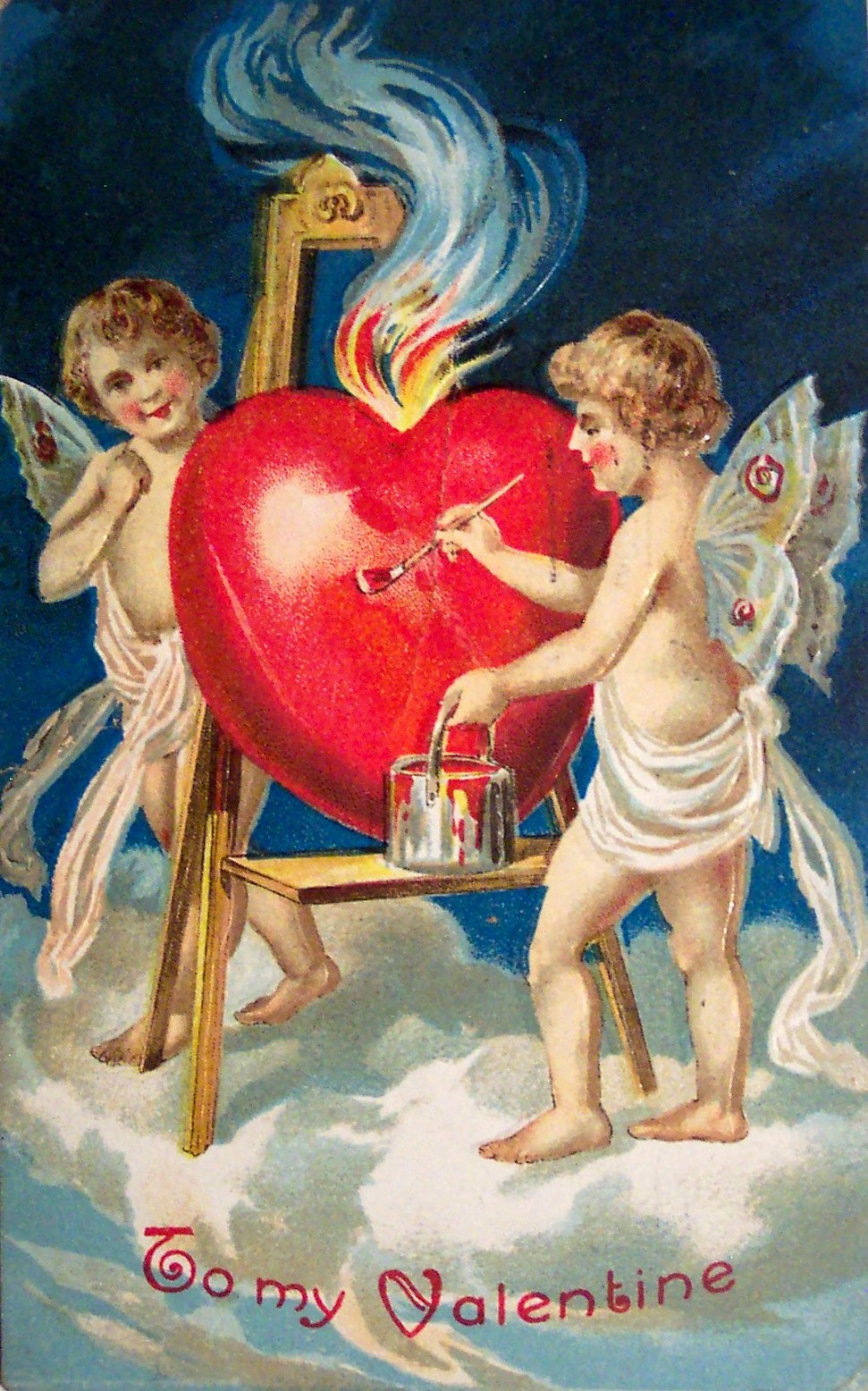Valentines Day, 2020
Valentine
Week List 2020
·
Rose Day: Friday, February 7th, 2020.
·
Propose Day: Saturday, February 8th, 2020.
·
Chocolate Day: Sunday, February 9th, 2020.
·
Teddy Day: Monday, February 10th, 2020.
·
Promise Day: Tuesday, February 11th, 2020.
·
Hug Day: Wednesday, February 12th, 2020.
·
Kiss Day: Thursday, February 13th, 2020.
·
Valentine Day: Friday 14th February, 2020
Valentine's Day is celebrated
as the day of love every year on February 14 but before that,
everyone celebrates Rose Day, Chocolate Day,
Propose Day, Promise Day, teddy day,
Hug Day and Kiss Day to show love and caring
gestures.
How Valentine Day Started?
Having a particular Valentine's Day is
a very old tradition, thought to have originated from a Roman festival. The
Romans had a festival called Lupercalia in the middle of February - officially
the start of their springtime. It's thought that as part of
the celebrations, boys drew names of girls from a box.
Why Valentine Day is celebrated?
February 14, Americans celebrate love
and friendship. ... With the introduction of Christianity, the holiday moved to
the 14th of February-the saint day that celebrated several
early Christian martyrs named Valentine. But somewhere along the
way, Valentine's Day came to represent romance.
Meaning of Valentine
The ancient Romans may also be responsible for
the name of our modern day of love. Emperor Claudius II executed two men — both
named Valentine — on Feb. 14 of different years in the 3rd century
A.D. Their martyrdom was honored by the Catholic Church with the celebration of
St. Valentine's Day.
Countries Where Valentine Day is Celebrating
Several other Asian countries also celebrate White Day,
including Vietnam and South Korea. Valentine's Day is a new holiday
in Denmark. Young people in the country began celebrating it
in the early 1990s. While Americans give red roses, young Danes celebrate
Valentine's Day with white flowers called “snowdrops.”
Countries Where Banned Valentine Day
Celebration
Pakistan is the latest country to ban
Valentine's Day celebrations in public spaces after the country's High
Court passed a ruling, saying it was against Islamic teachings, according to
local media reports.
Valentine Day in India
Especially to the Indian youth February 14
signifies love - a day when people express their affection for
others. Just as several other countries, people in India too celebrate the Valentine's
Day by exchanging cards and gifts. Euphoria of Valentine's Day
festival can be experienced weeks before the festival.
Valentine's
Day, also called Saint Valentine's Day or the Feast of Saint
Valentine, is celebrated annually on February 14. Originating as a Western
Christian feast day honoring one or two early saints
named Valentinus, Valentine's Day is recognized as a
significant cultural, religious, and commercial celebration of romance and
romantic love in
many regions around the world.
There
are numerous martyrdom stories associated with various
Valentines connected to February 14, including a written account of Saint
Valentine of Rome's imprisonment for performing weddings for
soldiers who were forbidden to marry and for ministering to Christians persecuted under the Roman Empire. According
to legend, Saint Valentine restored sight to the blind daughter of his
judge, and he wrote her a letter signed "Your Valentine" as a
farewell before his execution.[6] The
Feast of Saint Valentine was established by Pope Gelasius
I in AD 496 to be celebrated on February 14 in honour of the
Christian martyr, Saint Valentine of Rome, who died on that date in AD 269.
The day
first became associated with romantic love within the circle of Geoffrey
Chaucer in the 14th century, when the tradition of courtly love flourished.
In 18th-century England, it grew into an occasion in which couples expressed
their love for each other by presenting flowers, offering confectionery, and
sending greeting cards (known as "valentines"). Valentine's Day
symbols that are used today include the heart-shaped outline, doves, and the
figure of the winged Cupid. Since the 19th century, handwritten valentines have
given way to mass-produced greeting cards. In Europe, Saint Valentine's Keys are given to
lovers "as a romantic symbol and an invitation to unlock the giver's
heart", as well as to children to ward off epilepsy (called
Saint Valentine's Malady).
Although
not a public holiday in any country, Saint Valentine's Day is an official feast
day in the Anglican Communion and the Lutheran Church. Many parts of
the Eastern Orthodox Church also celebrate Saint Valentine's Day on July 6 and
July 30, the former date in honor of Roman presbyter Saint Valentine, and the
latter date in honor of Hieromartyr Valentine, the Bishop of
Interamna (modern Terni).
The Day in History[
Numerous early Christian martyrs were
named Valentine.[14] The Valentines honored on
February 14 are Valentine of Rome (Valentinus presb. m. Romae) and
Valentine of Terni (Valentinus ep. Interamnensis m. Romae). Valentine
of Rome was a priest in Rome who was martyred in 269 and
was added to the calendar of saints by Pope Gelasius I in 496 and was buried on
the Via Flaminia. The relics of Saint Valentine were
kept in the Church
and Catacombs of San Valentino in Rome, which "remained an important pilgrim
site throughout the Middle Ages until the relics of St. Valentine were
transferred to the church of Santa Prassede during the pontificate of Nicholas IV". The flower-crowned skull
of Saint Valentine is exhibited in the Basilica of Santa
Maria in Cosmedin, Rome. Other relics are found at Whitefriar Street Carmelite Church in
Dublin, Ireland.
Valentine of Terni became bishop of
Interamna and is said to have been martyred during the persecution under
Emperor Aurelian in 273. He is buried on the Via
Flaminia, but in a different location from Valentine of Rome. His relics are at
the Basilica of Saint Valentine in Terni (Basilica di San Valentino).
Jack B. Oruch states that "abstracts of the acts of the two saints were in
nearly every church and monastery of Europe. The Catholic
Encyclopedia also speaks of a third saint named Valentine who was mentioned in
early martyrologies under date of February 14.
He was martyred in Africa with a number of companions, but nothing more is
known about him. Saint Valentine's head was preserved in the abbey
of New
Minster, Winchester, and venerated.
Legends

J.C. Cooper, in The Dictionary
of Christianity, writes that Saint Valentine was "a priest of Rome who
was imprisoned for succouring persecuted Christians." Contemporary
records of Saint Valentine were most probably destroyed during this Diocletianic Persecution in the early
4th century. In the 5th or 6th century, a work called Passio Marii
et Marthae published a story of martyrdom for Saint Valentine of Rome,
perhaps by borrowing tortures that happened to other saints, as was usual in
the literature of that period. The same events are also found in Bede's Martyrology, which was compiled in the 8th
century. It states that Saint Valentine was persecuted as a Christian and
interrogated by Roman Emperor Claudius II in person. Claudius was impressed
by Valentine and had a discussion with him, attempting to get him to convert to
Roman paganism in order to save his life.
Valentine refused and tried to convert Claudius to Christianity instead.
Because of this, he was executed. Before his execution, he is reported to have
performed a miracle by healing Julia, the blind daughter of his jailer
Asterius. The jailer's daughter and his forty-six member household (family members and servants)
came to believe in Jesus and were baptized.
A later Passio repeated
the legend, adding that Pope
Julius I built a
church over his sepulchre (it is a confusion with a 4th-century tribune called
Valentino who donated land to build a church at a time when Julius was a Pope). The
legend was picked up as fact by later martyrologies, starting by Bede's martyrology in the 8th century. It was repeated
in the 13th century, in The
Golden Legend.
There is an additional embellishment
to The Golden Legend, which according to Henry Ansgar Kelly, was
added centuries later, and widely repeated. On the evening before
Valentine was to be executed, he is supposed to have written the
first "valentine" card himself, addressed to the daughter of his
jailer Asterius, who was no longer blind, signing as "Your
Valentine." The expression "From your Valentine" was later
adopted by modern Valentine letters. This legend has been published by
both American
Greetings and The
History Channel.
John Foxe, an English historian, as well as
the Order
of Carmelites, state that
Saint Valentine was buried in the Church of Praxedes in Rome, located near the
cemetery of Saint Hippolytus. This order says that according to
legend, "Julia herself planted a pink-blossomed almond tree near his
grave. Today, the almond tree remains a symbol of abiding love and friendship.
Another embellishment suggests that
Saint Valentine performed clandestine Christian
weddings for
soldiers who were forbidden to marry. The Roman Emperor Claudius II
supposedly forbade this in order to grow his army, believing that married men
did not make for good soldiers. However, George Monger writes that this
marriage ban was never issued and that Claudius II told his soldiers to take
two or three women for themselves after his victory over the Goths.
According to legend, in order "to
remind these men of their vows and God's love, Saint Valentine is said to have
cut hearts from parchment", giving them to these soldiers and persecuted Christians, a possible origin of the widespread
use of hearts on St. Valentine's Day.
Saint Valentine supposedly wore a
purple amethyst ring, customarily worn on the
hands of Christian bishops with an image of Cupid engraved in it, a recognizable symbol associated
with love that was legal under the Roman Empire; Roman soldiers would recognize
the ring and ask him to perform marriage for them. Probably due to the
association with Saint Valentine, amethyst has become the birthstone of February, which is thought to
attract love.
Folk Traditions
While
the European folk traditions connected with Saint Valentine and St. Valentine's
Day have become marginalized by the modern Anglo-American customs connecting
the day with romantic love, there are some remaining
associations connecting the saint with the advent of spring.
While
the custom of sending cards, flowers, chocolates and other gifts originated in
the UK, Valentine's Day still remains connected with various regional customs
in England. In Norfolk, a character called 'Jack' Valentine knocks on the
rear door of houses leaving sweets and presents for children. Although he was
leaving treats, many children were scared of this mystical person.
In Slovenia,
Saint Valentine or Zdravko was one of the saints of spring, the saint of
good health and the patron of beekeepers and
pilgrims. A proverb says that "Saint Valentine brings the keys of
roots". Plants and flowers start to grow on this day. It has been
celebrated as the day when the first work in the vineyards and in the fields
commences. It is also said that birds propose to each other or marry on that
day. Another proverb says "Valentin – prvi spomladin" ("Valentine
– the first spring saint"), as in some places (especially White
Carniola), Saint Valentine marks the beginning of spring. Valentine's
Day has only recently been celebrated as the day of love. The day of love was
traditionally March 12, the Saint Gregory's
day, or February 22, Saint Vincent's Day. The patron of love
was Saint Anthony, whose day has been celebrated on
June 13.
Valentine poetry
Je suis desja
d'amour tanné
Ma tres doulce Valentinée...
The earliest surviving valentines in
English appear to be those in the Paston
Letters, written in 1477 by Margery Brewes to her future husband
John Paston "my right well-beloved Valentine".
To-morrow is
Saint Valentine's day,
All in the morning betime,
And I a maid at your window,
To be your Valentine.
Then up he rose, and donn'd his clothes,
And dupp'd the chamber-door;
Let in the maid, that out a maid
Never departed more.
Hayle Bishop
Valentine whose day this is
All the Ayre is thy Diocese
And all the chirping Queristers
And other birds ar thy parishioners
Thou marryest every yeare
The Lyrick Lark, and the graue whispering Doue,
The Sparrow that neglects his life for loue,
The houshold bird with the redd stomacher
Thou makst the Blackbird speede as soone,
As doth the Goldfinch, or the Halcyon
The Husband Cock lookes out and soone is spedd
And meets his wife, which brings her feather-bed.
This day more cheerfully than ever shine
This day which might inflame thy selfe
old Valentine.
— John
Donne, Epithalamion Vpon Frederick Count Palatine and the Lady Elizabeth
marryed on St. Valentines day
"She bath'd with roses red, and
violets blew,
And all the sweetest flowres, that in the forrest grew."
The modern cliché Valentine's Day poem
can be found in the collection of English nursery rhymes Gammer Gurton's Garland (1784):
"The rose
is red, the violet's blue,
The honey's sweet, and so are you.
Thou art my love and I am thine;
I drew thee to my Valentine:
The lot was cast and then I drew,
And Fortune
said it shou'd be you.
Modern times
In 1797, a British publisher
issued The Young Man's Valentine Writer, which contained scores of
suggested sentimental verses for the young lover unable to
compose his own. Printers had already begun producing a limited number of cards
with verses and sketches, called "mechanical valentines." Paper
Valentines became so popular in England in the early 19th century that they
were assembled in factories. Fancy Valentines were made with real lace and
ribbons, with paper lace introduced in the mid-19th century. In 1835, 60,000
Valentine cards were sent by post in the United Kingdom, despite postage being
expensive.
A reduction
in postal rates following Sir Rowland Hill's postal reforms with the 1840 invention of the postage
stamp (Penny Black) saw the number of Valentines posted
increase, with 400,000 sent just one year after its invention, and ushered in
the less personal but easier practice of mailing Valentines. That made it
possible for the first time to exchange cards anonymously, which is taken as
the reason for the sudden appearance of racy verse in an era otherwise
prudishly Victorian.[67] Production increased,
"Cupid's Manufactory" as Charles Dickens termed it, with over 3,000 women
employed in manufacturing. The Laura Seddon Greeting Card Collection at Manchester Metropolitan University gathers 450 Valentine's Day cards
dating from early nineteenth century Britain, printed by the major publishers
of the day. The collection appears in Seddon's book Victorian
Valentines (1996).
In the United States, the first
mass-produced Valentines of embossed paper lace were produced and sold shortly
after 1847 by Esther Howland (1828–1904) of Worcester,
Massachusetts. Her
father operated a large book and stationery store, but Howland took her
inspiration from an English Valentine she had received from a business
associate of her father. Intrigued with the idea of making similar
Valentines, Howland began her business by importing paper lace and floral
decorations from England. A writer in Graham's American Monthly observed
in 1849, "Saint Valentine's Day ... is becoming, nay it has become, a
national holyday." The English practice of sending Valentine's cards
was established enough to feature as a plot device in Elizabeth Gaskell's Mr. Harrison's Confessions (1851): "I burst in with my
explanations: 'The valentine I know nothing about.' 'It is in your handwriting',
said he coldly." Since 2001, the Greeting Card Association has been
giving an annual "Esther Howland Award for a Greeting Card
Visionary".
Since the 19th century, handwritten
notes have given way to mass-produced greeting cards.[9] In the UK, just under half of the
population spend money on their Valentines, and around £1.9 billion was
spent in 2015 on cards, flowers, chocolates and other gifts. The mid-19th
century Valentine's Day trade was a harbinger of further commercialized
holidays in the U.S. to follow.
In 1868, the British chocolate
company Cadbury created Fancy Boxes – a decorated
box of chocolates – in the shape of a heart for Valentine's Day.[79] Boxes of filled chocolates
quickly became associated with the holiday. In the second half of the 20th
century, the practice of exchanging cards was extended to all manner of gifts,
such as giving jewelry.
The U.S. Greeting Card Association
estimates that approximately 190 million valentines are sent each year in the
US. Half of those valentines are given to family members other than husband or
wife, usually to children. When the valentine-exchange cards made in school
activities are included the figure goes up to 1 billion, and teachers
become the people receiving the most valentines. The average valentine's
spending has increased every year in the U.S, from $108 a person in 2010 to
$131 in 2013.
The rise of Internet popularity at the
turn of the millennium is creating new traditions. Millions of people use,
every year, digital means of creating and sending Valentine's Day greeting
messages such as e-cards, love coupons or printable greeting cards. An
estimated 15 million e-valentines were sent in 2010. Valentine's Day is
considered by some to be a Hallmark holiday due to its commercialization.
Valentine Day Quotes, Best Wishes, Images:



:max_bytes(150000):strip_icc()/happy-valentines-day-hearts-cute-flowers-clipart-589a06ee5f9b5874ee6800b3.jpg)































